If you’re a parent navigating the modern educational landscape, you know the struggle: technology is essential, but finding a device that balances performance, durability, and cost can feel like a Herculean task. We want our children equipped for success, but we also know that an expensive laptop might not survive the journey inside a backpack or the accidental spill.
That’s where the trusty Chromebook steps in.
As someone who has spent years assessing educational technology, I can tell you that the Chromebook platform has revolutionized schoolwork. They are fast, secure, incredibly easy to manage, and most importantly, affordable. But which one is the best chromebook for kids?
It’s not a one-size-fits-all answer. The needs of a kindergartener are vastly different from those of a high schooler prepping for the SATs. In this comprehensive guide, we are going to dive deep into exactly what specifications matter, why durability is king, and reveal the top rated chromebook for students across every age group. By the time we’re done, you’ll feel completely confident making the right investment for your child’s academic future.
Contents
- 1 Why Chromebooks Are the Ideal Choice for Students
- 2 Key Factors When Choosing the Best Chromebook for Kids
- 3 Finding the Perfect Match: Chromebook Recommendations by Age Group
- 4 Deep Dive Reviews: Top Rated Chromebooks for Students in 2024
- 5 Essential Software and Parental Controls on ChromeOS
- 6 Answering Your FAQs About Chromebooks for Schools
- 7 Conclusion: Making the Right Investment
Why Chromebooks Are the Ideal Choice for Students
Before we start comparing models, let’s talk about why Chromebooks have become the dominant platform in K-12 education, often surpassing traditional Windows laptops or expensive tablets. They simply offer the perfect blend of functionality and restraint necessary for a learning environment.
Simplicity and Security: A Parent’s Peace of Mind
The core operating system, ChromeOS, is built on the Google ecosystem, which means it boots up in seconds and rarely suffers from the slowdowns and complex updates that plague other systems. For a child—or frankly, for a parent troubleshooting late at night—this simplicity is priceless.
Furthermore, security is baked in. ChromeOS features a multi-layered security system that automatically updates and sandboxes applications, making it incredibly difficult for viruses or malware to take root. When you are looking for a chromebook for kids, knowing that their device is inherently secure offers enormous peace of mind. You don’t have to worry about complex antivirus programs; Google handles that heavy lifting for us.
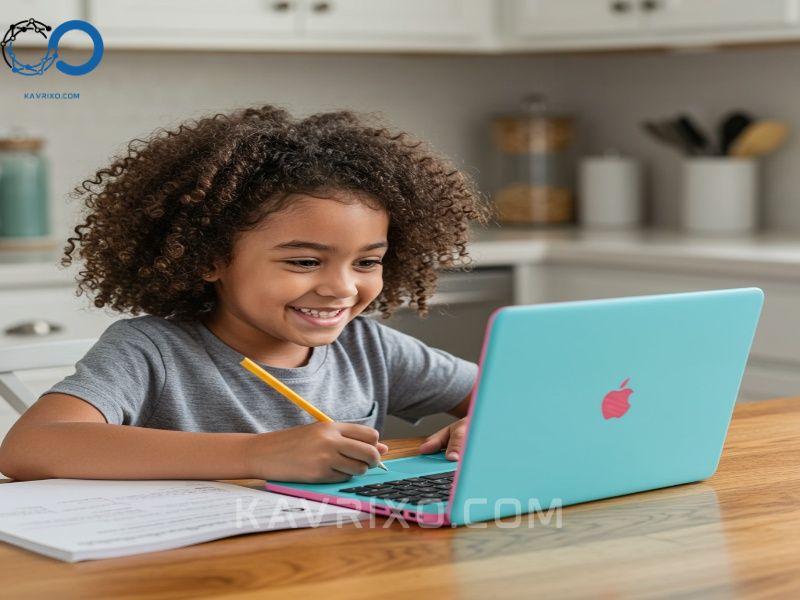
Budget-Friendly Power: Maximizing Value
Let’s be honest: budget matters. Most households need multiple devices, and shelling out $800 or more for a dedicated school laptop isn’t feasible for many. This is where Chromebooks truly shine. Because ChromeOS relies heavily on cloud computing, these devices don’t require high-end processors or massive internal storage (most schoolwork is saved to Google Drive).
This efficiency translates directly into lower manufacturing costs, meaning you can often find a good, reliable chromebook for students starting well under $300. This low barrier to entry ensures that quality educational technology is accessible to everyone.
Key Factors When Choosing the Best Chromebook for Kids
When I talk to parents about tech, they often focus on RAM or processor speed—specs that are critical in a gaming PC but less so in a Chromebook. For a device intended for school use, we need to shift our focus to three main pillars: Durability, Battery Life, and Usability.
Durability is Non-Negotiable (The “Oops” Factor)
If I could give one piece of advice to parents searching for the best chromebook for kids, it would be this: prioritize ruggedness above almost everything else. Kids drop things. They spill juice. They cram devices into overstuffed backpacks.
Look specifically for devices marketed as “ruggedized” or “military standard tested” (often MIL-STD 810G or H). These features include:
- Reinforced Ports and Hinges: The parts that get the most wear and tear.
- Spill-Resistant Keyboards: A must-have feature that protects the sensitive internal components from small liquid accidents.
- Rubberized Bumpers: Extra cushioning around the edges to absorb shock from drops, particularly important when buying a chromebook for a 10 year old who is transitioning between classes frequently.
You are not just buying a laptop; you are buying insurance against accidental damage. We want the technology to withstand the reality of childhood.
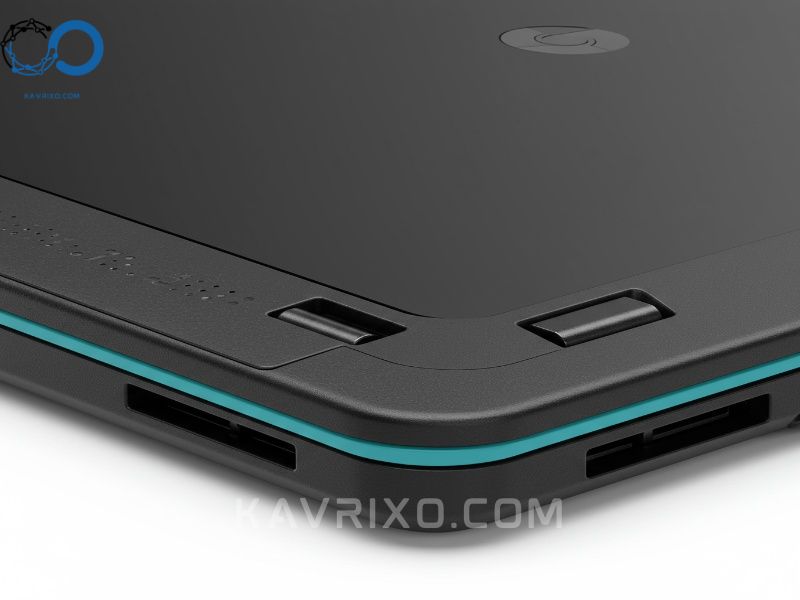
Battery Life That Lasts the School Day
The last thing a student (or teacher) needs is a device that dies halfway through the afternoon science lesson. Excellent battery life is crucial, especially if the device is traveling between home and school.
When reviewing specifications, aim for a minimum of 8 hours of real-world usage. Many of the good chromebooks for students today boast 10 to 12 hours of battery life, which means they can often go a full school day without needing a charge, simplifying logistics both for you and the school.
Screen Size and Display Quality: What Matters for Young Eyes?
The display choice often depends entirely on the student’s age and primary use case.
Size Considerations:
- 11.6 Inches: This is the standard, most portable size. It’s light, easy to handle for younger children, and fits perfectly in a standard backpack. It is often the ideal size for the best chromebook for kids in elementary or middle school.
- 13 or 14 Inches: This size offers better screen real estate for multitasking, research papers, and viewing complex documents. It is generally better suited for older students, especially those looking for the best chromebook for college students who may be running multiple tabs or needing to view detailed spreadsheets.
Touchscreen and Convertible Designs:
Many Chromebooks are 2-in-1 convertibles (they fold into a tablet). While this adds a small cost, it significantly increases versatility.
- For Younger Kids: A touchscreen makes drawing, interactive learning apps, and simple navigation much easier. It turns the device into a powerful learning tool, not just a typing machine.
- For Older Students: The ability to fold the device into “tent mode” for presentations or use the touchscreen for note-taking in tablet mode can be invaluable.
| Age Group | Recommended Screen Size | Key Feature Focus |
|---|---|---|
| 5-8 (Early Learners) | 11.6 inches | Touchscreen, Rugged Shell, Low Weight |
| 9-12 (Middle School) | 11.6 to 13 inches | Durability, Battery Life, Balanced Performance |
| 13+ (High School/College) | 13 to 15.6 inches | Keyboard Quality, RAM (8GB preferred), Full HD display |
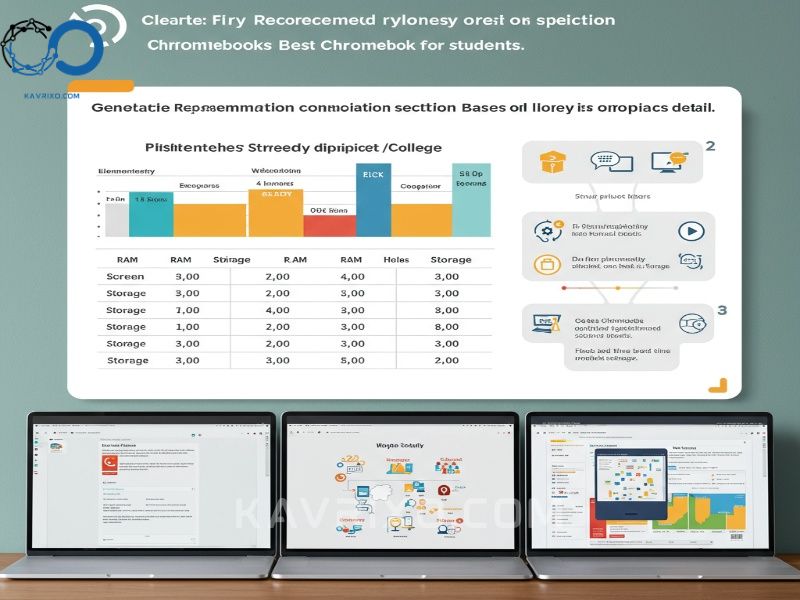
Finding the Perfect Match: Chromebook Recommendations by Age Group
Since needs vary so widely, let’s break down our recommendations based on what the student will actually be doing with the device.
Early Learners (Ages 5-8): Focus on Rugged and Simple
For this age group, the primary uses are basic reading apps, Google Classroom access, and maybe some simple coding or creative drawing. They don’t need huge storage or massive power; they need resilience.
Key Requirements: 4GB RAM is sufficient, 32GB storage (since everything is cloud-based), high durability, and a mandatory touchscreen.
Expert Insight: Look for models specifically marketed to schools (often denoted by an ‘E’ or ‘Education’ model number). These are built to survive the hands of the youngest users. We want a device that can handle being dropped from a desk height without catastrophic failure.
Middle Schoolers (Ages 9-12): The Ideal Chromebook for a 10 Year Old
The middle school years are when schoolwork shifts from interactive apps to actual productivity—typing reports, conducting research, and managing multiple tabs. A chromebook for a 10 year old needs better performance than a first-grader’s device, but still requires excellent durability.
Key Requirements: 4GB RAM minimum (8GB is ideal for multitasking), 64GB storage (if they download Android apps), strong battery life, and a responsive, full-sized keyboard.
Expert Insight: This is the sweet spot for the 2-in-1 convertible design. Students this age love the versatility, and the ability to quickly switch between typing a book report and using the device as a tablet for viewing digital textbooks is highly beneficial.
High School and College Students: Advanced Features
Once students reach high school and college, their demands move closer to professional use. They need to handle video editing (lightly), run complex web apps, manage massive research projects, and potentially use the device for extended periods in a coffee shop or library. This is where we consider the best chromebook for college students.
Key Requirements: 8GB RAM is highly recommended (this is the single biggest factor for speed), 128GB storage (or more), a fast processor (Core i3 or better, or equivalent high-end MediaTek), and a high-resolution (Full HD/1080p) display for visual comfort during long study sessions.
Expert Insight: For this group, prioritize the quality of the keyboard and trackpad. They will be typing thousands of words, and a cramped or mushy keyboard will quickly lead to frustration. A slightly larger, premium build quality is worth the extra investment here.
Deep Dive Reviews: Top Rated Chromebooks for Students in 2024
Based on real-world testing, user reviews, and my own experience managing school fleets, these are the top rated chromebook for students currently available, organized by their primary strength.
The All-Around Winner: Acer Chromebook Spin 713 (or Equivalent Premium Model)
If you are looking for a device that spans middle school through college—a truly future-proof investment—the Acer Spin 713 series (and its subsequent yearly iterations) consistently tops the list.
Why It Excels: This model is usually built with a premium aluminum chassis, offering robust durability without the bulky plastic look. Critically, it features a unique 3:2 aspect ratio screen. While most laptops use 16:9 (wide screen), the taller 3:2 ratio offers significantly more vertical space, which is fantastic for reading documents, browsing school portals, and writing papers—it simply shows more content at once. It almost always includes an Intel Core i3 or i5 processor and 8GB of RAM, making it incredibly fast.
Best For: High school students, college students, or parents willing to pay a bit extra for a device that will last six or more years.
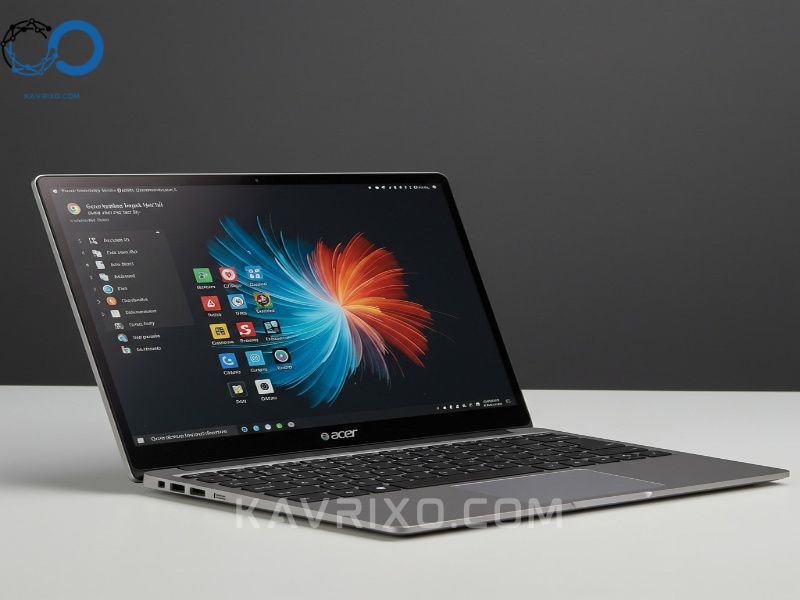
The Budget King: Lenovo Chromebook Duet 3 or 5
When your primary concern is affordability and portability for younger students, the Lenovo Duet series stands out. These are technically detachables (tablet with a keyboard cover), offering maximum flexibility.
Why It Excels: The Duet offers tremendous value. The Duet 3 is perfect for elementary and middle schoolers, providing a vibrant screen and all-day battery life in a tiny, easy-to-carry package. Because it runs on an efficient processor, the battery performance is phenomenal. It’s perfect as a dedicated chromebook for kids who only need basic access to Google Classroom and light educational apps.
Caveat: The keyboard on the detachable cover is smaller and less robust than a standard clamshell laptop, making it less ideal for heavy-duty typing tasks required by high schoolers.
Best For: Early learners (K-5) or families needing an extremely portable secondary device.
The Durability Champion: Dell Latitude 3120/3140 2-in-1 (Education Series)
When you absolutely must have a device that can survive the apocalypse (or at least the typical middle school locker room), you turn to education-focused lines like Dell’s Latitude or certain HP Education models.
Why It Excels: These devices are specifically engineered to meet MIL-STD standards. They feature fully sealed, spill-resistant keyboards, rubberized edges, and pressure-resistant screens. They are often built to withstand drops from 30 inches or more. While they might not have the slimmest profiles, their reliability is unmatched. If you are shopping for the best chromebooks for schools—or want that same level of protection at home—this is the route to take.
Best For: Elementary and middle school students where durability is the single most important metric.
The Performance Upgrade: HP Elite Dragonfly Chromebook
For the advanced student—perhaps one taking AP courses, doing light coding, or needing seamless integration with premium business tools—the HP Dragonfly is arguably the highest-end Chromebook available.
Why It Excels: This is a premium machine that competes directly with high-end Windows ultrabooks. It features a stunning display, haptic trackpad, incredibly fast processors (often Core i5 or i7), and excellent build quality. While expensive, it offers the best performance and multitasking capability on the ChromeOS platform, making it a true contender for the best chromebook for college students who prioritize speed and design.
Best For: College students, high school students focused on advanced computing, or anyone needing a professional-grade device running ChromeOS.
Essential Software and Parental Controls on ChromeOS
One of the greatest advantages of choosing a Chromebook is the integration with Google’s educational ecosystem and the powerful parental controls built right into the operating system. We, as parents, can breathe easier knowing we have tools to guide our children’s online habits.
Leveraging Google Classroom and Productivity Tools
Every chromebook for students is designed to work seamlessly with Google Classroom, Google Docs, Sheets, and Slides. This means no complicated software installation is needed. Files are instantly shared and saved, making the transition between home and school work absolutely effortless.
Moreover, the availability of Android apps through the Google Play Store means that if your child needs a specific application—from educational games to specialized study aids—they are usually just a click away. Just ensure the model you select supports Android apps (most modern ones do).
Setting Up Safety with Family Link
The key management tool for parents is Google Family Link. If your child is under the age of 13 (or whatever age requires parental consent in your country), you absolutely should use Family Link.
What Family Link Allows You To Do:
- Screen Time Limits: Set daily usage limits and a “bedtime” when the device locks itself.
- App Approvals: Your child must request permission from you before downloading new apps from the Play Store.
- Location Tracking: Keep track of where the device (and hopefully the child) is located.
- Content Filtering: Manage website access and filter inappropriate content through Google SafeSearch settings.
Setting up these controls ensures that while your child has access to the vast resources of the internet, they are doing so within safe, parentally-approved boundaries. This is a critical step in maximizing the benefit of the best chromebook for kids while mitigating risks.
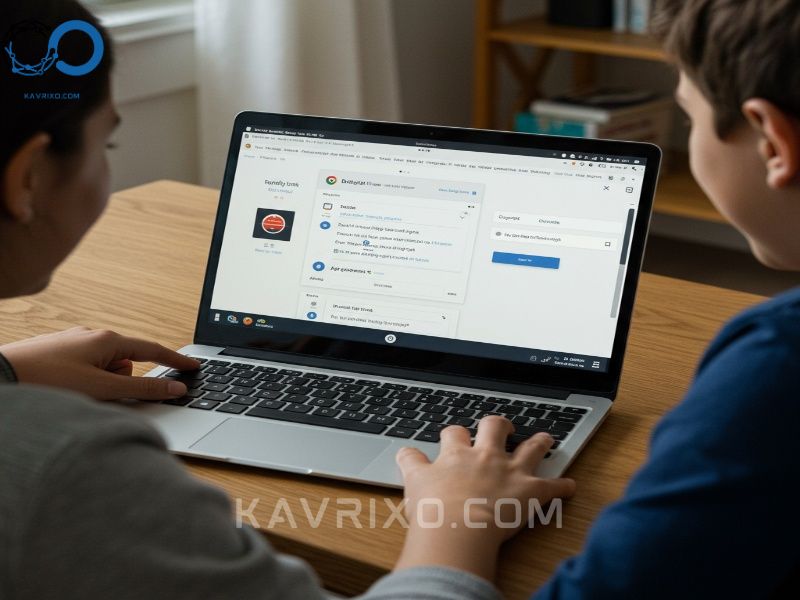
Answering Your FAQs About Chromebooks for Schools
I frequently hear similar questions from parents who are new to the ChromeOS world. Let’s tackle some of the most common concerns.
Q: Do Chromebooks need Wi-Fi to work?
A: Not entirely. While Chromebooks are optimized for online use, they support robust offline functionality for core productivity tasks. Google Docs, Sheets, and Slides can all be used without an internet connection. Once the student connects to Wi-Fi again, the files automatically sync to the cloud. This is great for students who might be working in areas with spotty connectivity.
Q: Is 4GB of RAM enough?
A: For basic elementary school use (ages 5-8), 4GB is adequate. However, for middle school and up, where students are routinely running Google Meet video calls, switching between 10+ research tabs, and running multiple apps, 8GB of RAM makes a dramatic difference in performance and user satisfaction. If your budget allows, always choose 8GB for the best chromebook for students over the age of 12.
Q: What is the difference between an eMMC and SSD storage?
A: This is a technical detail, but it affects speed. Most budget Chromebooks use eMMC (embedded MultiMediaCard) storage, which is slower but cheaper. Higher-end or top rated chromebook for students often use SSD (Solid State Drive) storage, which is much faster. For younger users, eMMC is fine, as ChromeOS boots quickly regardless. For older students needing rapid file access or running Linux environments, an NVMe SSD is highly preferred.
Q: Can Chromebooks run Microsoft Office?
A: Yes, through two primary methods:
- Online: Students can use Microsoft 365 through the browser, which is fully functional.
- Android App: They can download the Microsoft Office Android apps from the Google Play Store on most modern Chromebooks.
However, most schools that use Chromebooks rely almost exclusively on the Google Workspace ecosystem (Docs, Sheets), so compatibility is rarely an issue.
Q: Should I buy a brand-new model or a refurbished one?
A: For the best chromebook for kids, especially younger ones, buying refurbished from a reputable source can save significant money and still provide a great experience. Since the operating system is lightweight, older hardware often performs just as well. Just ensure the device has a long “Auto Update Expiration” (AUE) date, which tells you how long Google will continue to provide official security and feature updates. Always check the AUE date before purchasing any used Chromebook!
Conclusion: Making the Right Investment
Choosing the best chromebook for kids is really about matching the device’s capabilities to your child’s stage of development and academic workload.
For the young, focus on ruggedness and simplicity. For the adolescent, prioritize battery life and multitasking power (8GB RAM). For the college student, invest in premium features like a great keyboard and a higher-resolution screen.
Chromebooks offer a fantastic, cost-effective, and secure path to educational technology. By focusing on the essential factors—durability, battery life, and age-appropriate performance—you can confidently select the perfect machine that will support your student through years of learning and growth. We are here to help equip the next generation, and with a great Chromebook, we are giving them an excellent tool to succeed.

